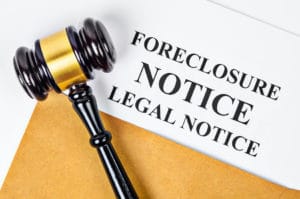 Short sales are a viable way for homeowners to avoid foreclosure when they are no longer able to make their monthly mortgage payments, and when the current market value of the home is less than the remaining mortgage balance. In a short sale, the property can be sold for less than the amount owed on the mortgage loan. The seller may still have to pay back the difference, but in Minnesota, that is not always the case.
Short sales are a viable way for homeowners to avoid foreclosure when they are no longer able to make their monthly mortgage payments, and when the current market value of the home is less than the remaining mortgage balance. In a short sale, the property can be sold for less than the amount owed on the mortgage loan. The seller may still have to pay back the difference, but in Minnesota, that is not always the case.
Short sales can also be a risk for buyers, with many experts unable agree if they always represent a good value. Homeowners and buyers alike need to weigh the pros and cons to determine if short sales will work well for their needs. This article reviews what homeowners should understand about the short sale process to determine if such a move is right for them.
For informational purposes only. Always consult with an attorney, tax, or financial advisor before proceeding with any real estate transaction.
How Does a Short Sale Work?
Lenders typically lose money on a short sale; therefore, they will usually consider this option only if the borrower is behind on payments, often authorizing a short sale when a foreclosure becomes a real possibility.
Lenders may also consider allowing a short sale if the homeowner needs to move when the market is down, causing the home’s market value to drop below the mortgage balance. When this happens, the home is said to be “underwater.” In either situation, homeowners must write a hardship letter to the lender describing why a short sale is needed. Then, the lender can consider the circumstances and decide whether to approve or deny the request for a short sale. If the request is denied, the homeowner can revise the letter and try again. Enlisting the help of a real estate agent experienced in short sales can improve the chances of receiving approval.
Steps to a Short Sale
Once homeowners realize that they are heading toward foreclosure, it is wise to consider short sale as an option. By understanding the steps to a short sale in advance, they will be better prepared for this process and move through each phase with confidence.
Get a Property Valuation Analysis
Before pursuing a short sale, it is critical to determine the current value of the home by having a skilled real estate agent prepare a comparative market analysis. Another option is to hire a broker who will create a broker price opinion (BPO).
When preparing a comparative market analysis, real estate agents look at the property sales records for the area, searching for properties with similar characteristics, including:
- Square footage
- Lot size
- Interior features
- Building material finishes
- Age of the dwelling
Upon comparing the properties, a real estate agent can pinpoint an ideal price range for the short sale to sell at.
Although used most often by lenders, a broker is a good option for homeowners as well when it comes to pricing and selling a home. Brokers offer either an internal evaluation or drive-by broker price opinion in determining the value of the property. With the internal evaluation, the broker will either need to tour the residence or use photos of the inside. The drive-by option is used by lenders when they do not want to disturb the current residents or do not have access to the interior of the home.
Regardless of which professional homeowners choose to work with, they will gain an inside look at the value of their home. Then, they can compare that value to the total amount owed on the mortgage loan to decide how to proceed.
Get a Hardship Letter
Once it’s determined that the sale price of the home will not be enough to pay off the loan balance, the homeowner must reach out to the lender for short sale approval. To acquire approval, it is necessary to write a hardship letter explaining the circumstances.
Although emotions might be running high, the letter needs to be matter of fact to make the best impression on the lender. Homeowners should clearly explain that they do not have the funds for their mortgage payments and why.
Commonly accepted reasons for financial hardship include:
- Loss of employment
- Reduced income
- Medical bills
- Divorce or separation
- Death of the breadwinner
Whether voluntary or involuntary, job transfers can also result in hardship that necessitates a move.
Beyond describing the hardship, homeowners need to firmly state that the situation is permanent, removing the possibility of resolution. This forces the lender to consider lasting solutions, like a short sale, rather than presenting ones that will work temporarily.
Above all, homeowners should keep the letter concise, giving the lender a quick snapshot of the situation. The letter should end with a request to resolve the situation through a short sale.
Contact Lender for Short Sale Application
The hardship letter is just one part of the short sale package that lenders request from homeowners. This package acts as the short sale application, which is required for a low offer to go through the approval process.
Homeowners must contact their lender to see how to submit this application. Some lenders have created online portals for this purpose, while others still rely on their fax machine. In certain cases, it might be best for homeowners to overnight the application by FedEx or UPS if this is accepted by their lender.
While asking about the application submission requirements, homeowners should also inquire about the documents they need to include in the package. They will need to compile these documents ahead of time for submission upon receiving an offer, as the short sale process can be lengthy.
Beyond the hardship letter, the package will likely need to include:
Proof of Financial Hardship
The proof of financial hardship backs up the homeowner’s claims made in the letter. Each lender determines what proof they need to make a decision, including:
- Tax returns
- W2s or 1099s
- Bank statements
- Pay stubs
- Profit and loss statements
In addition to these documents, homeowners may need to provide explanations about any discrepancies in the paperwork. Bonuses, large withdrawals, and other actions outside the norm should be noted and explained to help the processors better understand the situation.
Listing Agreement
Lenders use the listing agreement to see if homeowners and their agent are operating in good faith in selling the short sale for the highest possible price. The listing agreement should show:
- Name of the real estate agent or brokerage
- Date the home was put on the market
- Duration of the agreement
- Commission rate
The lender will use this information to determine if the offer makes sense for how long the home has been on the market in addition to its overall value. Offers that are far below market value will likely be denied if the home has only been listed for a week or so, for example.
Purchase Contract
A purchase contract outlines the terms of the sale that were created during negotiations with the buyer. Most contracts include:
- The property address
- Land description
- Purchase conditions, including inspection
- Offered price
- Possession date
If the short sale buyer will use financing to secure the property, the contract should also provide a timeline for the financing to take place. Many lenders require that homeowners and the buyer sign the documents in person rather than electronically. They must also initial various spots on the contract to show they understand and agree to the terms.
Authorization Letter
When working with a broker or real estate agent, homeowners will need to place an authorization letter in the short sale package. This letter gives the lender permission to correspond with the listing agent through verbal or written means. With that document in hand, they can speak with the agent in negotiating the short sale rather than having homeowners act as a go between.
Closing Disclosure
The closing disclosure is the last piece of the puzzle. This document shows the address of the property along with the sellers’ and buyers’ names. The estimated closing date is included as well to provide a timeline of the short sale.
Homeowners may also want to place their comparable market analysis or broker price opinion in the package. This will help justify acceptance of the offer, helping reduce the chance of a rejection or counteroffer. Lenders often submit a counteroffer as a matter of course, to attempt to reduce their losses from the short sale.
Prepare the Short Sale Package
When an offer comes in, homeowners should have most of the short sale package ready to go. The hardship letter, proof of financial difficulties, and authorization letter can be prepared ahead of time, for example. The real estate agent will assist in the creation of the other supporting documents, completing the package and readying it for delivery to the lender.
Before sending everything over, homeowners should verify that their documents support the claims in the hardship letter. If anything seems unclear, they can revise the letter, create additional notes, or add more documents as proof of their challenges. The final step is to send the short sale package to the lender using their submission requirements.
The Short Sale Package is Reviewed by a Loss Mitigation Specialist
The short sale package goes straight to a loss mitigation specialist upon receipt by the lender. This specialist takes a look at all the details and performs their own calculations. Through their evaluations, the loss mitigation specialist determines if this option is the best course of action for both the lender and homeowner.
If the loss mitigation specialist finds that the short sale option will not provide a favorable outcome for either party, they may identify other alternatives to foreclosure. The homeowner can then explore those options on their own, weighing the pros and cons of each to find the best solution.
The decision-making process takes about 60 days to complete, giving the loss mitigation specialist time to explore all the details of the transaction. Buyers must be prepared to wait, or they could back out of the deal. Real estate agents can help in educating prospective buyers on what to expect and how long they might wait for offer acceptance.
Negotiate Short Sale and Closing
Depending on the loss mitigation specialist’s findings, the lender may approve or reject the offer. The lender can also submit a counteroffer for the buyer’s consideration, offer to sell at a higher price, or negotiate certain terms. The buyer will then need to accept or reject the counteroffer to complete negotiations.
In certain cases, lenders may do nothing at all. The offer will not be able to go through without the lender’s approval, leaving the homeowner searching for a different solution. If this happens, the homeowner will need to choose foreclosure or revise the short sale package and start anew.
If the short sale offer is approved, the property will go into closing. This phase takes about 30 days to complete. By the end of the short sale, it is not uncommon for homeowners to have waited well over four months for a resolution to their financial challenges.
How Does a Short Sale Affect Your Credit?
When homeowners complete the short sale, their credit score will be significantly impacted, but less so than a foreclosure. The impact on the credit score can vary depending on other factors affecting their credit.
A history of paying bills on time, maintaining low account balances, and having a long positive credit history can help mitigate the impact of a short sale. With many positive factors on their side, homeowners may only experience a 100-point drop in their credit scores.
When looking at their credit report, homeowners will not see the short sale listed as such. Instead, they will find it listed as pre-foreclosure in redemption status. The difference will work in their favor if they go back to a lender about a new mortgage loan. Short sales are often viewed more favorably than foreclosures, as they point toward the homeowner doing all they could toward resolving their financial difficulties.
With so many factors to consider, homeowners have a lot of research ahead before deciding to go with a short sale. They will need to look into all the alternatives to foreclosure and weigh each option to find the best one for their needs. Then, they can see if they qualify for the short sale and find a qualified real estate agent to help. Their agent will provide more information on completing the process and offer guidance every step of the way.
For informational purposes only. Always consult with an attorney, tax, or financial advisor before proceeding with any real estate transaction.



